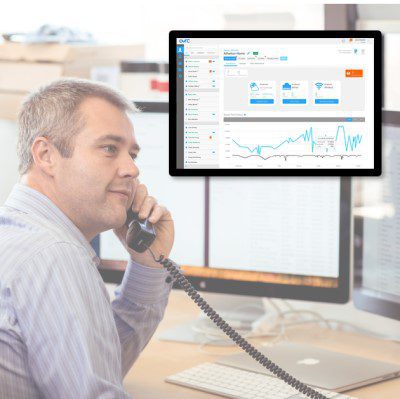What’s the biggest challenge in the home-technology integration industry? I mean, besides the labor shortage? It is, I believe, the inability to service clients who have a home full of connected devices from disparate vendors.
Typically, the ongoing service must be provided by the installing dealer – who might be too busy, too inefficient, no longer in business or otherwise unable to provide the prompt and effective service that clients demand of a professionally installed system.
This challenge of supporting systems over the long term creates a big fat stain on our industry. Sick of the upkeep and confusing cast of characters, homeowners who splurged on a fancy custom system the first time-around often opt for something simpler from a mass-market brand the next go-round.
“I would argue that if a homeowner moves every seven-to-10 years, many who had a system [in a previous home] will opt for a more basic system now,” says David Welles, principal of integrator Tunnel Vision Technology Inc. (now part of AVDG via Guitar Center acquisition).
Why splurge for a professionally installed system when you could kludge together a DIY or semi-custom system on the cheap, with sometimes-decent remote support from Amazon and friends? Or better still … in-home service by a number of local technicians from Geek Squad, Amazon Smart Home Services, Dish Home Services, Vivint, or whatever mass-market machine comes along.
How can we, as an industry, do a better job of servicing custom clients over the long haul? Not just your own clients, but the entire collective? Regardless of which company sold and installed a “custom” system, and which manufacturers provided the goods, an unhappy customer is bad news for every integrator.
“I paid a fortune for this custom system, and it doesn’t work,” users say. “I’ll just buy something cheap from Best Buy and get Geek Squad to install it.”
Often, the thing that “doesn’t work” is a network dead spot or a loose HDMI cable, which the disgruntled client may never know.
Towards a Universal ‘Service Department’
As Welles wisely notes, “If you do not have a separate service department that is constantly checking in with your clients you are setting yourself up for failure.”
Who but the largest firms has the bandwidth for that? When the entire labor-challenged industry is striving for efficiency, why not share a universal service department? That is the principle behind companies like Parasol and OneVision Resources, which remotely monitor, diagnose and otherwise provide tech support for end users on behalf of custom installers.
NEXT: Home Tech Pros Should Get Hyperlocal With Nextdoor.com, Other Neighborhood Networks
In the big scheme of things, though, these companies are small and they service just a handful of higher-end integrators and their clients. They are constrained, and the entire industry is constrained, because there is no “standard” in custom integration and no universal platform for remote managed services (RMS).
When the security industry created a standard for communicating between security panels and central stations, the alarm business took off. In the IT world, managed service providers created an industry around standard networking processes and platforms.
Imagine if we had a standardized method for sharing device data with service centers nationwide for third-party support. Now imagine if consumers come to expect that their smart-home systems will be monitored full-time by a third-party provider – as with security and IT monitoring – for a fee. Would an industry grow up around this model?
I think so. The good news is that we may be closing in on a “standard” with the impending merger of Control4 and SnapAV. The two companies have the leading RMS platforms … by far.
Among CE Pro 100 integrators, 91% use SnapAV’s OvrC platform, and 63% use Control4’s BakPak or Ihiji platforms. Assuming the merger goes through, the combined company could work towards a single platform that the industry embraces. “Central monitoring stations” would crop up as in the alarm industry; custom clients would be well serviced and happy; integrators would rake in recurring revenue; and the custom installation business would be the hottest thing going. There ya have it.








